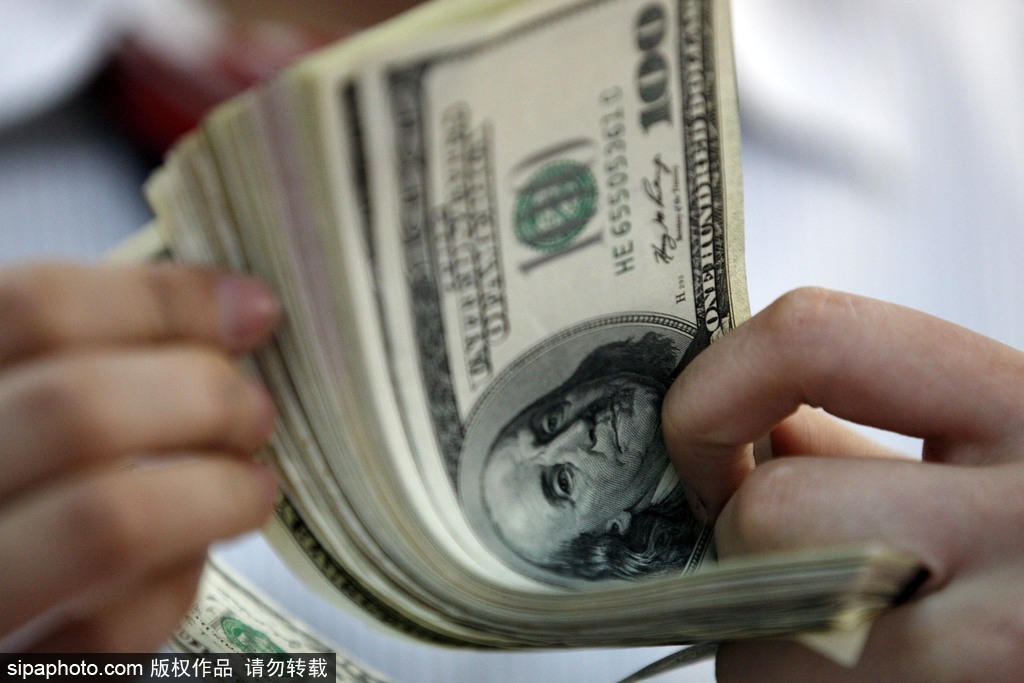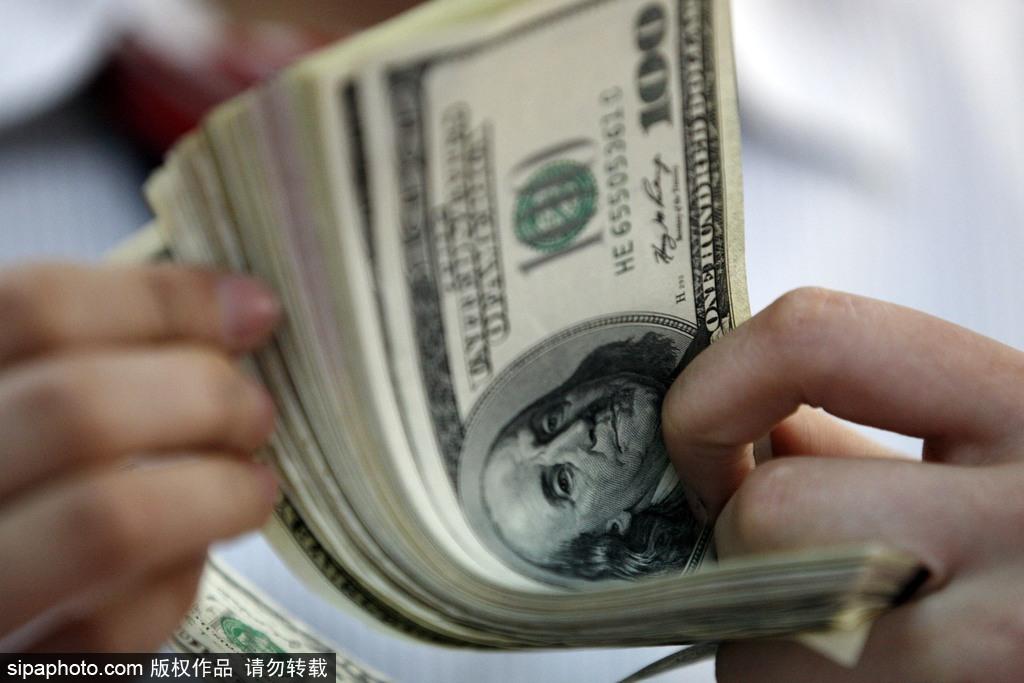
A teller counts and arranges dollar notes at a bank in Huaibei, Anhui province. [Photo/Sipa]
Overall inflows in March decline 14% on yearly basis to 81.78 billion yuan
Foreign direct investment in the nonfinancial sector fell by 10.8 percent on the Chinese mainland on a yearly basis to 216.19 billion yuan ($31.2 billion) in the first quarter of this year, the Ministry of Commerce said on Wednesday.
The ministry said investment inflows were affected by the COVID-19 outbreak during the three-month period. FDI flows in March declined 14.1 percent on a yearly basis to 81.78 billion yuan. The decline was 11.5 percentage points narrower than the level seen in February.
With the government rolling out a number of policy measures to help foreign enterprises resume production and further tap consumption potential in the home market, the FDI inflow in March showed that global firms are now aware that the epidemic impact is only short-term, said Ma Yu, a researcher at the Chinese Academy of International Trade and Economic Cooperation in Beijing.
Given the uncertainties in global markets, multinational companies have no plans to cut their investment plans in China as the country has been recovering more steadily from the epidemic and started exporting goods to other parts of the world, he said. China will see more FDI inflows in sectors like medical products, pharmaceuticals and high-tech industries until next year, said Ma.
Buoyed by China's growing demand for medical gloves and related materials like nitrile butadiene latex, South Korea's LG Chem Ltd invested 330 million yuan on a new manufacturing facility in Ningbo, Zhejiang province, last week to produce nitrile butadiene latex. The project is expected to be operational by April 2021, with an annual output of 100,000 metric tons.
According to the ministry, global capital flows into high-tech service industries on the Chinese mainland jumped by 15.5 percent on a yearly basis between January and March, accounting for 29.9 percent of the foreign investment in the services sector.
In the meantime, information services saw 28.5 percent year-on-year growth in FDI flows, while e-commerce businesses notched up gains of 62.4 percent on a yearly basis. Professional technical services was another major gainer with a 95-percent growth in FDI flows on a yearly basis.
Japanese multinational Panasonic Corp said last month that it will build a plant to produce electronic materials needed for 5G-related products in Guangzhou, the capital of Guangdong province. The Japanese firm said it was encouraged by China's measures to speed up new infrastructure construction, especially to offset the economic slowdown and foster high-quality development.
Tetsuro Homma, Panasonic Corp's chief executive officer for China and Northeast Asia, said once the new factory becomes operational, the company's electronic material output capacity would increase significantly. This will help the company maintain a 10-percent growth in sales every year, over the next five years.
Wei Jianguo, vice-chairman of the China Center for International Economic Exchanges in Beijing, said it is an opportune time for China to accelerate the pace of supply-side structural reform.
"If such reforms can mobilize or upgrade production elements such as capital, labor force and technology, and achieve high-quality development and governance modernization, then the cost China has paid during the outbreak will not be in vain," he said.
As an important component of supply-side structural reform, new infrastructure, which covers seven areas including 5G, extra-high voltage and the internet of things, will help attract more foreign investment and enhance China's development capabilities, Wei said.
Eager to boost its economic growth vitality, Shanghai announced 24 new policies last week to further improve the city's business environment and attract more foreign investors.
The measures were introduced to implement the country's deepened opening-up policies, step up investment promotion, make business opportunities more accessible to foreign investors, and protect their legal rights, according to the municipal government.
(Source: China Daily)




 A single purchase
A single purchase









